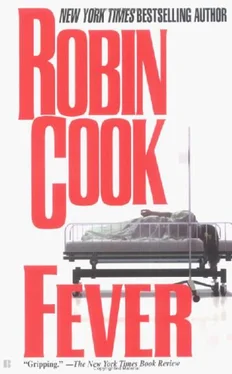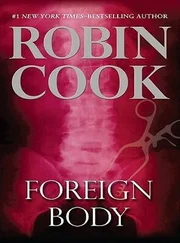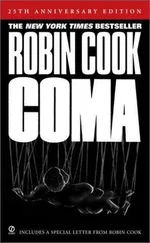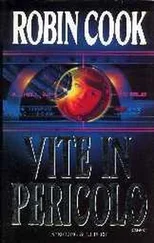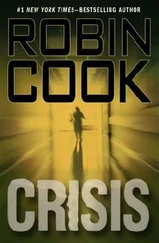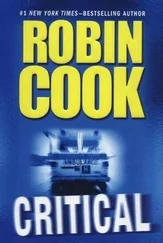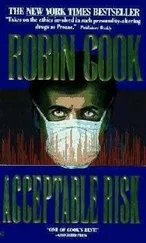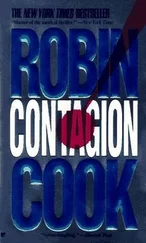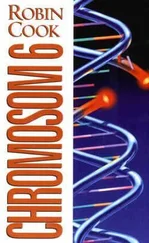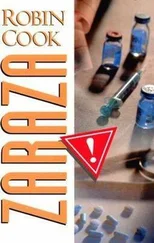Robin Cook - Fever
Здесь есть возможность читать онлайн «Robin Cook - Fever» весь текст электронной книги совершенно бесплатно (целиком полную версию без сокращений). В некоторых случаях можно слушать аудио, скачать через торрент в формате fb2 и присутствует краткое содержание. Год выпуска: 2000, ISBN: 2000, Издательство: Berkley Publishing Group, Жанр: Триллер, на английском языке. Описание произведения, (предисловие) а так же отзывы посетителей доступны на портале библиотеки ЛибКат.
- Название:Fever
- Автор:
- Издательство:Berkley Publishing Group
- Жанр:
- Год:2000
- ISBN:0425174204
- Рейтинг книги:3 / 5. Голосов: 1
-
Избранное:Добавить в избранное
- Отзывы:
-
Ваша оценка:
- 60
- 1
- 2
- 3
- 4
- 5
Fever: краткое содержание, описание и аннотация
Предлагаем к чтению аннотацию, описание, краткое содержание или предисловие (зависит от того, что написал сам автор книги «Fever»). Если вы не нашли необходимую информацию о книге — напишите в комментариях, мы постараемся отыскать её.
Fever — читать онлайн бесплатно полную книгу (весь текст) целиком
Ниже представлен текст книги, разбитый по страницам. Система сохранения места последней прочитанной страницы, позволяет с удобством читать онлайн бесплатно книгу «Fever», без необходимости каждый раз заново искать на чём Вы остановились. Поставьте закладку, и сможете в любой момент перейти на страницу, на которой закончили чтение.
Интервал:
Закладка:
Fever
by Robin Cook
To the joy of my family—it began with my parents, now shared with my wife
Prologue
The poisonous molecules of benzene arrived in the bone marrow in a crescendo. The foreign chemical surged with the blood and was carried between the narrow spicules of supporting bone into the farthest reaches of the delicate tissue. It was like a frenzied horde of barbarians descending into Rome. And the result was equally as disastrous. The complicated nature of the marrow, designed to make most of the cellular content of the blood, succumbed to the invaders.
Every cell exposed to the benzene was assaulted. The nature of the chemical was such that it knifed through the cell membranes like steel through butter. Red cells or white, young or mature, it made no difference. Within some lucky cells where only a few molecules of benzene entered, enzymes were able to inactivate the chemical. In most others the destruction of the interior membranes was immediate.
Within minutes the concentration of the benzene had soared to the point that thousands of the poisonous molecules had reached the very heart of the marrow, the primitive, finely structured stem cells. These were the actively dividing units, serving as the source of the circulating blood cells, and their activity bore witness to hundreds of millions of years of evolution. Here, being played out moment by moment, was the incredible mystery of life, an organization more fantastic than the wildest scientific dream. The benzene molecules indiscriminately penetrated these busily reproducing cells, interrupting the orderly replication of the DNA molecules. Most of these cells either halted the life processes in a sudden agonal heave or, having been released from the mysterious central control, tumbled off in frenzied undirected activity like rabid animals until death intervened.
After the benzene molecules had been washed away by repeated surges of clean blood, the marrow could have recovered except for one stem cell. This cell had been busy for years turning out an impressive progeny of white blood cells whose function, ironically enough, was to help the body fight against foreign invaders. When the benzene penetrated this cell’s nucleus, it damaged a very specific part of the DNA but did not kill the cell. It would have been better if the cell had died because the benzene destroyed the fine balance between reproduction and maturation. The cell instantly divided and the resulting daughter cells had the same defect. No longer did they listen to the mysterious central control and mature into normal white blood cells. Instead they responded to an unfettered urge to reproduce their altered selves. Although they appeared to be relatively normal within the marrow, they were different from other young white blood cells. The usual surface stickiness was absent, and they absorbed nutrients at an alarmingly selfish rate. They had become parasites within their own house.
After only twenty divisions there were over one million of these lawless cells. By twenty-seven divisions there were over one billion; they then began to break free from the mass. First a trickle of sick cells entered the circulation, then a steady stream, finally a flood. These cells charged out into the body eager to establish fertile colonies. By forty divisions they numbered over a trillion.
It was the beginning of an aggressive, acute myeloblastic leukemia in the body of a pubescent girl, starting December 28, two days after her twelfth birthday. Her name was Michelle Martel and she had no idea except for a single symptom: she had a fever!
One
A cold January morning tentatively fingered its way over the frigid landscape of Shaftesbury, New Hampshire. Reluctantly the shadows began to pale as the winter sky slowly lightened, revealing a featureless gray cloud cover. It was going to snow and despite the cold, there was a damp sting to the air; a sharp reminder that off to the east lay the Atlantic.
The red brick buildings of old Shaftesbury huddled along the Pawtomack River like a ghost town. The river had been the support, the lifeblood of the town; it sprang from the snow-laden White Mountains in the north and ran to the sea in the southeast. As the river coursed past the town, its smooth flow was interrupted by a crumbling dam and a large waterwheel that no longer turned. Lining the riverbanks were block after block of empty factories, reminders of a more prosperous age when New England mills were the center of the textile industry. At the extreme southern end of town, at the foot of Main Street, the last brick mill building was occupied by a chemical operation called Recycle, Ltd., a rubber, plastic, and vinyl recycling plant. A wisp of acrid, gray smoke rose from a large phallic smokestack and merged with the clouds. Over the whole area hung a foul, choking odor of burnt rubber and plastic. Surrounding the building were enormous piles of discarded rubber tires, like the droppings of a gigantic monster.
South of the town the river ran through rolling, wooded hills, interspersed by snow-covered meadows and bordered by fieldstone fences erected by settlers three hundred years before. Six miles south of the town the river took a lazy curve to the east and formed an idyllic six-acre peninsula of land. In the center was a shallow pond connected to the river by an inlet. Behind the pond rose a hill capped by a white-framed Victorian farmhouse with gabled roofs and gingerbread trim. A long winding driveway bordered with oaks and sugar maples led down to the Interstate 301 heading south toward Massachusetts. Twenty-five yards north of the house was a weather-beaten barn nestled in a copse of evergreens. Built on piles at the edge of the pond was a miniature copy of the main house; it was a shed turned playhouse.
It was a beautiful New England landscape, like a January calendar scene, except for a slight macabre detail: there were no fish in the pond and no encircling vegetation within six feet.
Inside the picturesque white house, the pale morning light diffused through lace curtains. By degrees the gathering dawn gently nudged Charles Martel from the depths of a satisfying sleep. He rolled over onto his left side, enjoying a contentment he’d been afraid to acknowledge for the past two years. There was a sense of order and security in his life now; Charles had never expected to experience this again after his first wife had been diagnosed with lymphoma. She had died nine years ago, leaving Charles with three children to raise. Life had become something to endure.
But that was now in the past, and the awful wound had slowly healed. And then to Charles’s surprise, even the void had been filled. Two years ago he had remarried, but he still was afraid to admit how much his life had changed for the better. It was safer and easier to concentrate on his work and the day-to-day necessities of family life than to acknowledge his newly regained contentment and thereby admit to the ultimate vulnerability, happiness. But Cathryn, his new wife, made this denial difficult because she was a joyous and giving person. Charles had fallen in love with her the day he met her and had married her five months later. The last two years had only increased his affection for her.
As the darkness receded, Charles could see the placid profile of his sleeping wife. She was on her back with her right arm casually draped on the pillow above her head. She looked much younger than her thirty-two years, a fact that initially had emphasized the thirteen years’ difference in their ages. Charles was forty-five and he acknowledged that he looked it. But Cathryn looked like twenty-five. Resting on his elbow, Charles stared at her delicate features. He traced the frame of her provocative widow’s peak, down the length of the soft brown hair to her shoulder. Her face, lit by the early morning light, seemed radiant to Charles and his eyes followed the slightly curved line of her nose, noticing the flare of her nostrils as she breathed. Watching her he felt a reflex stirring deep within him.
Читать дальшеИнтервал:
Закладка:
Похожие книги на «Fever»
Представляем Вашему вниманию похожие книги на «Fever» списком для выбора. Мы отобрали схожую по названию и смыслу литературу в надежде предоставить читателям больше вариантов отыскать новые, интересные, ещё непрочитанные произведения.
Обсуждение, отзывы о книге «Fever» и просто собственные мнения читателей. Оставьте ваши комментарии, напишите, что Вы думаете о произведении, его смысле или главных героях. Укажите что конкретно понравилось, а что нет, и почему Вы так считаете.
